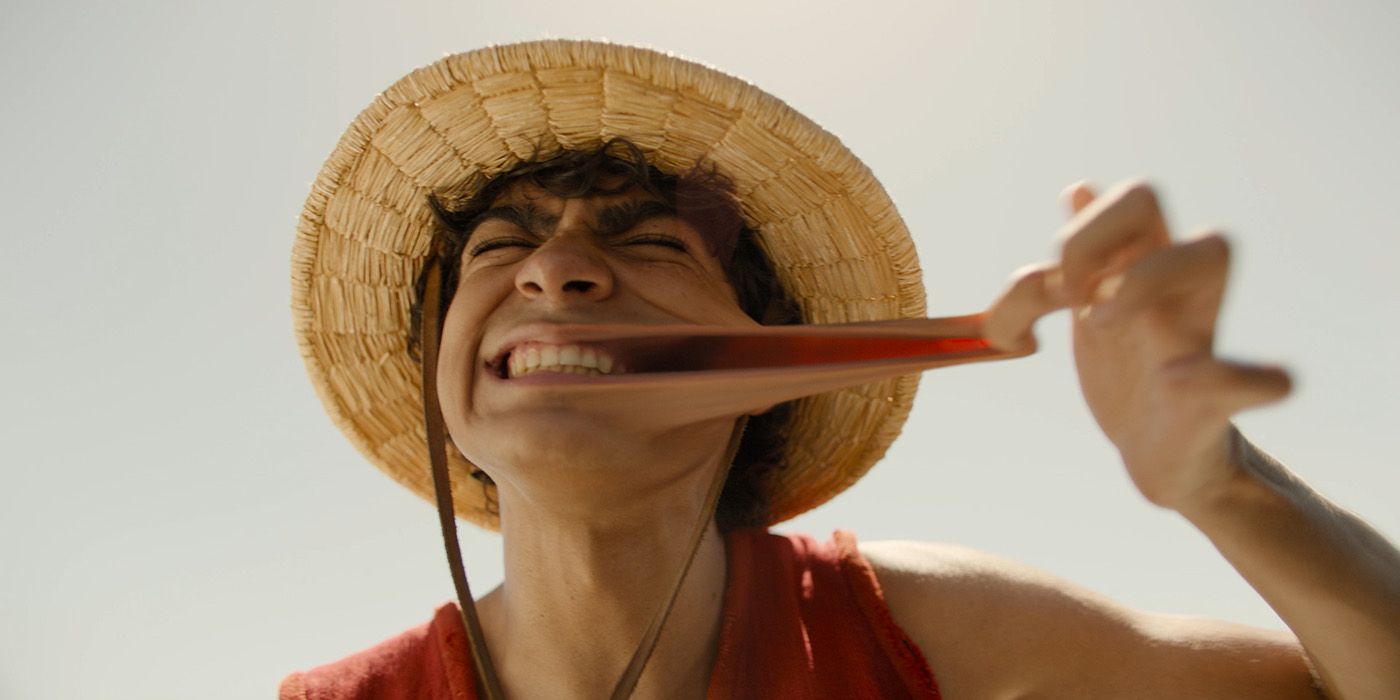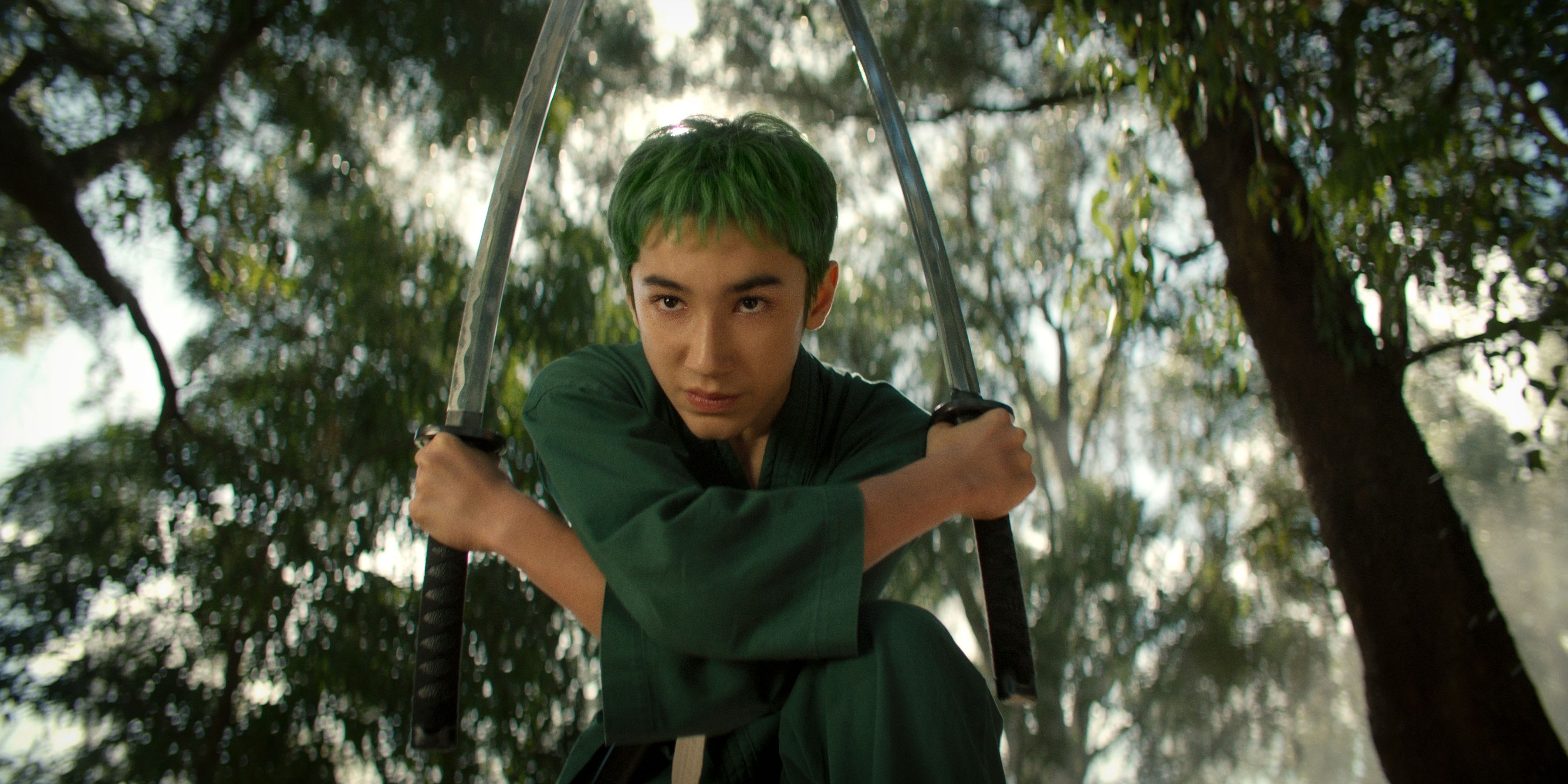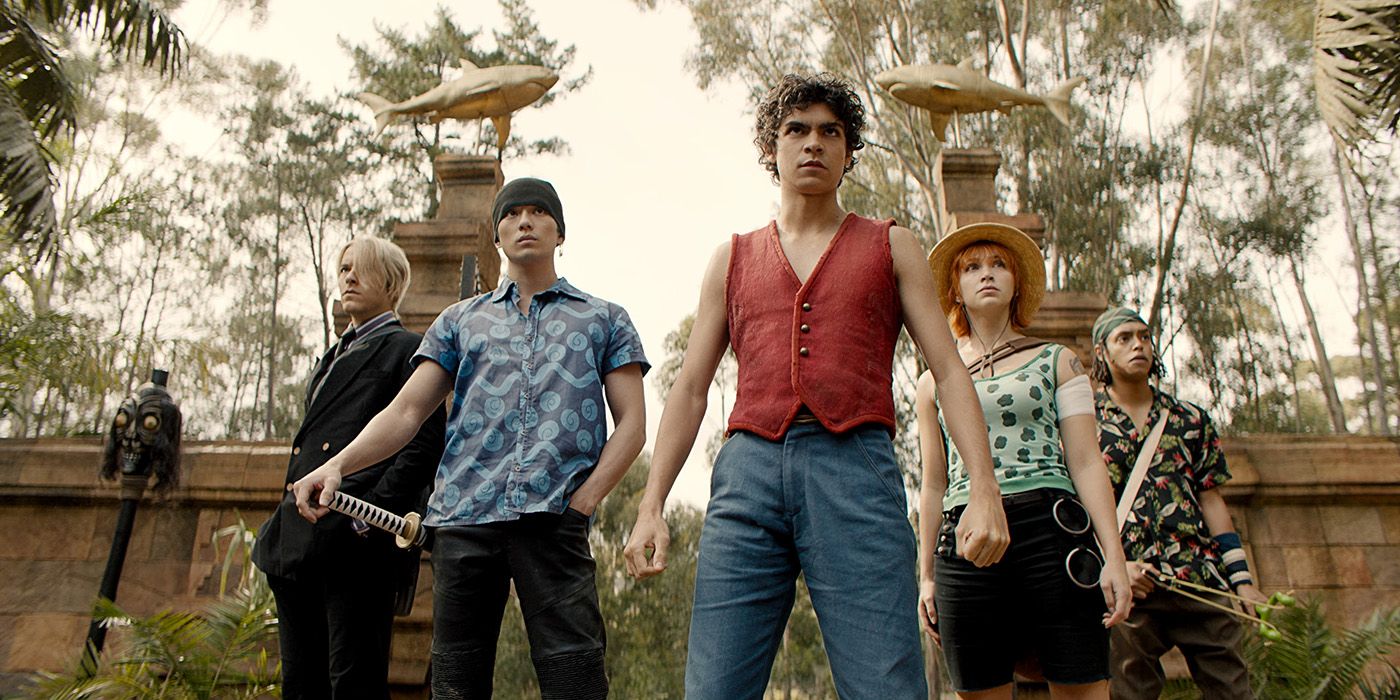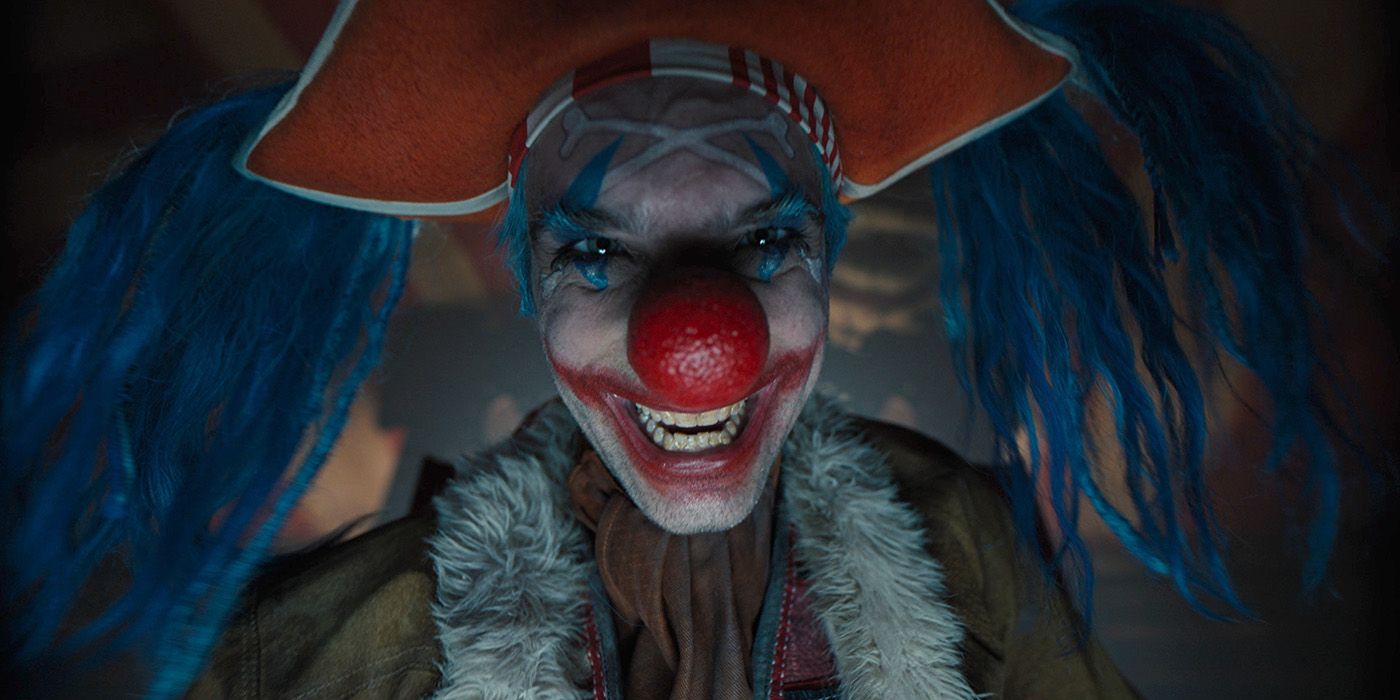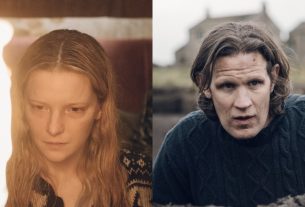The Big Picture
- The director, Marc Jobst, emphasizes the importance of the optimistic theme of following your dreams in the live-action adaptation of One Piece.
- Jobst aims to bring dimension to the characters and honor the emotional impact the series has on fans, creating a show that complements both the manga and anime.
- The director used unique filming techniques, including specialized lenses, to capture the essence of the manga’s framing and create an immersive experience for the audience.
A note from Marc Jobst:
Marc would like to state that he supports both SAG and WGA in their pursuit of reaching a fair and equitable resolution to the respective strikes. In talking about his work – past and present – he does so with unequivocal support for the highly skilled crews that make up the different unions (SAG and WGA included) and believes all should be valued and recompensed for the contributions they make in bringing these series and films to life.
If there is one thing that drives the story of Eiichiro Oda‘s One Piece, it’s the idea of following your dreams at any cost. The ragtag crew assembled by future King of the Pirates, Monkey D. Luffy, each have something they’re chasing, and its their belief in themselves and their captain’s belief in them that keeps them chasing. If one element needs to survive the jump to Netflix’s live-action adaptation, it is this.
Fortunately, in a one-on-one interview with Collider’s Arezou Amin, director Marc Jobst, who helmed the first two episodes of the season, said that this optimistic notion of following your dreams was essential, making the pirate series exactly the kind of show this world needs right now. He also discussed how he created a safe environment for his cast, working on the series with Oda’s all-important feedback, how he hopes the show will increase the love for the manga and anime, and his favorite scene to shoot.
COLLIDER: Let’s dive in and talk about embarking on this One Piece adventure. What was it about the Manga and anime that called to you and made you want to see it take this live-action adventure series format?
MARC JOBST: In all honesty, I didn’t really know very much about it. I knew of its existence, of course. The One Piece anime was hugely successful, and I knew about the manga, but it wasn’t really until I got the call from the studio to say would I be interested to come and talk about it, and I asked to read the scripts, that I really fell in love with it. That was partly because I think Steven [Maeda] and Matt [Owens] had written such beautiful scripts that were full of epic world-building and landscapes and action and adventure, and huge, big moments and crazy, whimsical, goofy characters, but also beautifully intimate, really astute observations of what it is to be a human being, some beautiful relationships, and the sense of insight into our world. I felt like, “This is a show that I really want to be a part of.” It’s sunny and it’s optimistic, and it’s full of hope, and I really felt like the world needs a show like this, that isn’t post-apocalyptic or dark and all that sort of things, but that’s got a character at its center that says, “Believe! Believe in yourself, believe in your dreams.”
That’s what I love about this show so much is that the thesis feels almost like, “Do what you have to do to be happy and to be fulfilled,” and I love that aspect of it. Was there an element that was key for you to have in this live-action adaptation that sets it apart from the manga and the anime, apart from its medium being live-action?
JOBST: Well, yes, really. It was a conversation that Matt, Steve, and I had in a lot of depth when we first embarked on this show, which is, “Why do a live-action show? What is it we think we can add to what is already a phenomenal manga and a hugely successful anime by going into live-action? What do we think we can add to it?” Because there’s no point in just doing it for the sake of doing it; you wanna be able to add something to it. Of course, when you go into live-action, what you’re adding is dimension. When you put a character, a warm-blooded human being, an actor playing these two-dimensional drawings on a piece of paper, what you’re really doing is you’re dimensionalizing the character; you’re giving them a full three-dimensional emotional life that has a backstory, that has wants and desires, that has pains and hurts, that laughs, that cries, that has all of human frailty to it. So what we really passionately felt we could do to add to this brilliant project was dimension.
What we really hope is that, by doing that, by creating characters that we hope the audience and the fans fall in love with, want to root for, that experience increases their love of the anime and increases their love of the manga because they’re dimensionalizing those two-dimensional characters that they see in the manga. And of course, vice versa; they bring in what they know about them from the manga into the live-action. So we really hope that we can sit alongside these others as a complement, an and/and not an and/or, if that makes sense.
It does. So in directing the first two episodes, can you talk a bit about the pressure of setting all this up, this dimension, this new version? What did that feel like?
JOBST: Really exciting. There are very few times as a director where, when you get into a casting room and you audition actors—and we auditioned for months to try and find the right actors for this incredible piece—many of those actors would come into the casting and say, “You have no idea what this means to me. This has seen me through so many dark times.” And when many actors come into your audition and tell you that, then as a director, you kind of feel like, “Wow, we really got something that we’ve got to do here that means something to people.” It isn’t just a romp and a crazy, fantastical world, but that means something to people, and I wanted to honor that. I really wanted to honor that.
Of course, Matt and Steve’s scripts deliver that. It starts with a script, and my job as a director is to kind of really realize their scripts and then add value to those scripts, to bring a vision to it, to realize it on the screen, and to deliver what we all felt was its true north, its sense of direction where we’re going to, which is believe in yourself, believe in your dreams, be loyal to your friends, invite them to be who they are and to be more of who they are, and to become who you wanna be. That’s a great thing to do.
That’s not to say that I didn’t have some sleepless nights! [Laughs]
Oh, of course!
JOBST: But it’s only because those sleepless nights were usually only because I really was keen to honor what obviously meant so much to the fan base, not, “Oh my god, this is gonna be so scary,” and, “How do I do it?” It’s more like, “Are we making this work?
Right. Tying into that and bringing all these scripts to life, I wonder what the biggest challenge was in realizing the scripts on the day. Was it something technical? Then on the flip side of that, is there a moment or a sequence that you’re most excited for everybody to experience once the show premieres?
JOBST: Oh, I want them to experience it all. I’m excited by it all. I really do feel that, genuinely feel that. I don’t always feel like that. I think the other thing as a director that I was very keen to get right is when you look at the framing of the manga, when you look at how those drawings are framed, they’re very particular. You’ve got this big foot coming right into the foreground of the frame, and then you’ve got this body far in the back, or you’ve got the one eye, and the world by the eye, and all those sorts of things, you know. So it seemed to me really important that we should somehow find a way, a language, to shoot this live-action show, that referenced and honored that framing, but that also somehow worked in live-action and didn’t feel fake or didn’t feel showy-offy. What I’m trying to say is, I suppose, that it felt like it was grounded in our world. So, how can you do that? How can you reference those frames and still feel part of a three-dimensional live-action world, a human world?
Nicole Whitaker was the DOP on the first two episodes, and we worked together and we shot with some MiniHawk lenses, which are really beautiful. I loved the wide lenses of Yorgos Lanthimos’ film, The Favourite. It was big, wide lenses, and I thought, “Oh, you’re seeing all this amazing location,” but I didn’t like the bend for One Piece, so I said, “Can we create those same lenses and take out the fish eye bend and give me really close focus?” So on one level, we had the close focus, and very often, I was shooting literally with the camera this far away from the actor’s face, and that would give me the eye, if you like, but I’d also see so much location because I also had wide lenses. What that enabled me to do, and I think what we were trying to achieve, is to get the sense [that] the audience was going on this adventure with the characters. So I could put my lens here so my character is in focus, but as they’re seeing the world, so we see the world. I don’t have to cut to a wide shot, which basically is showing the world. I wanted to experience the world as the characters experience the world, and that felt very One Piece. So those are the lenses, we managed to get those lenses built. They’d never been used before. They were brand new. They were just for One Piece. They’re called large-format MiniHawk lenses, and they were built in Germany by Vantage.
The other thing is how we shoot the action because action is so important to One Piece, and it’s important to get that right. It felt important to find a language and a style for our One Piece action that wasn’t just generic action like we see in all shows. Certainly, it was different to the action sequences I showed in the Marvel shows, for example, and also in The Witcher, which are much more visceral – they’re much more gritty, dark, dirty, bloody, painful, they’re all about the punch, about the hit. One Piece seemed to me to be more playful in that. It felt like we wanted to enjoy the journey to the punch more than we wanted to enjoy the punch. That then became the language for the fight sequences that we were following, using these lenses that allowed me to get very close into the characters, but then also fluidly go out and then find another fight that was taking place with that same lens without having to make a cut. It felt like we were always with the characters as we were dancing our way through these fights. It’s much more Kung Fu Hustle and Crouching Tiger [Hidden Dragon] than it is Marvel Studios or The Witcher.
I can see that, I like that! In talking about this balance between this larger-than-life action style and the sets, and everything is just so big, but the character emotion is so, so grounded, could you talk about your approach in realizing very grounded emotion in the midst of all this fantasy?
JOBST: Oh, what a great question. We had four weeks rehearsal, and we brought all the key cast over, and we worked together every day for half the day. We played some games, we humiliated ourselves in front of each other, we ate, we laughed, we goofed about. We did a community project so that they could bond together in the community project and also do some service in the environment in which we were working in South Africa. We didn’t really work very much on the scenes in the scripts. We did some work on some of the key scenes, but I come from theater, so I’m really used to working with actors. I love working with actors. I love actors, and the most important relationship is between the actor and the director to have a trusting relationship. And I felt really strongly that if we could build that trust in those rehearsal periods and those times together, then when they came out onto set, they’d feel safe with me.
I always say to them, “Look, I’m your parachute. Whatever you do, I’ll make sure you get a soft landing. I’ll never laugh at you, I’ll never think anything that you do is ridiculous or silly. I will make sure that whatever you do, you’ll get a soft landing. I’ll protect you, but you gotta jump. You gotta try, and I’ll hold you.” And once we got into that, then it’s about creating a safe space on the set for them to work, talking through the scenes and going through some of the basic things that you do when you’re working with actors, where you say, “What’s the story that we’re telling in this scene? Why do we have this scene? What’s the point of the scene? What does your character want for the whole story? What’s its bigger want? What does it want within this episode, and what does it want within this scene?” Because once you work those things out, then the actor has a point to the scene, there’s a direction to the scene. Those basic fundamental directions of the director working with an actor make the actor feel like they’re being held and they’re being watched and that the director has got their back, and then they let go. Of course, when you work in a fearful environment, you contract; you just give as little as you dare because you’re afraid. When you work in a confident environment, you expand, and you try, and that’s when you get magic.
That’s when you can take the story risks.
JOBST: My job as a director is to take the story risks, but also ask the actors to take risks too. And my job is, as you rightly say, within the chaos of a film set, is to create enough stillness and space and safety for them to work in. I’m very, very strong about that. The set is a place for the actor, and it’s all about the actor. It doesn’t matter how great your sets are, it doesn’t matter how brilliant your visual effects are, doesn’t matter all the bells and whistles you can have in the production; if you’ve got a crap performance, who cares? But if you’ve got a beautiful performance, it’s magic. And how do you get a beautiful performance? By creating a space for the actor to work.
I love that. When I talked to Nicole Whitaker, she highlighted the Buggy the Clown sequence as one of her favorite characters. I want to get your take on it and deep dive into it a bit because it’s both funny and it’s got this horror element, and now that you’ve explained the lenses, that explains so much about how that was shot. I want to know if you could talk a bit more about bringing Buggy the Clown to life.
JOBST: Well, Buggy was the biggest challenge, I think, I’d ever had in shooting something. We were all nervous about it in a sense because it’s such a complicated thing to not look ridiculous. And again, because we were creating a grounded world, somehow you’ve got to believe, “Well, of course, he can cut himself up into 1000 pieces. Of course. Why would he not?” So that was the challenge. When Jeff Ward auditioned for us, he was wearing makeup, and he leapt out of the screen in his audition and grabbed you by the throat, so we knew we had our Buggy.
Then, when we stepped onto the set, and we shot with him on his day one, it’s this enormous huge tent. It’s just a vast set all made out of old canvas sails, and everything, stitched together. We must have had, I don’t know, three, 400 extras in that, and it only just took up about half of the tent, it’s huge. Jeff walked onto that stage, and he roared, and it was beautiful. He owned that stage, and he owned that floor, and it was like, “Wow! Now let’s see how Luffy reacts.” And of course, what was great is that Jeff sort of devoured his words and owned that space, which also made Luffy work harder. So you had this magical thing of Luffy, who’s saying this is fun, and Buggy saying, “I’m gonna eat you up,” and that makes it really electric. And the fact that Luffy wasn’t scared by Buggy’s biting and roaring, and all the rest of it, just made Buggy more angry, which then becomes really dramatic.
It’s a difficult episode to shoot, but I think it was beautifully lit by Nicole and a brilliantly designed set by Richard Bridgland. In the darkness of it all, you’ll probably notice if you go back to it, it gets progressively darker, literally the light. So it starts off with lots of colors and lights, and the lights are moving, and we’ve got white, yellow, red, blue and all the rest of it, and gradually, by the time we get into the tank, it’s almost monochromatic.
I love that whole sequence. This isn’t really a question, but the fact that Zoro and Nami have always been two of my favorite characters, and we get to see them working together much sooner than they do in the manga makes me very happy.
JOBST: I think that was the point, and that’s how Steven and Matt calibrated it so well, I felt. At the end of the pilot, for the very first time, we see the three of them together, and Luffy is thinking, “My crew,” and they’re thinking, “Uh-uh, this guy’s freaky, I don’t want anything to do with him.” Then, of course, you get into Episode 2, and they’re captured together, and they’re in it together, and they somehow have to get out of this kind of crazy, mad, horror world of Buggy, you can begin to see that they’re a crew before Nami and Zoro even know they are. Luffy knows.


